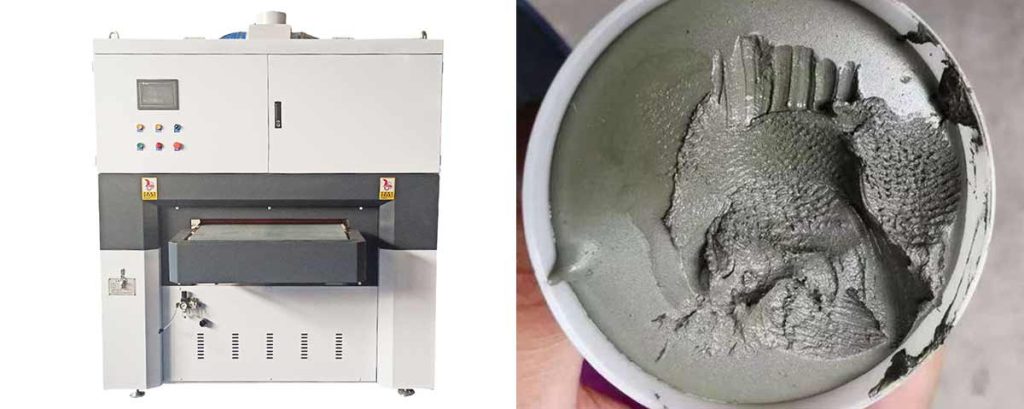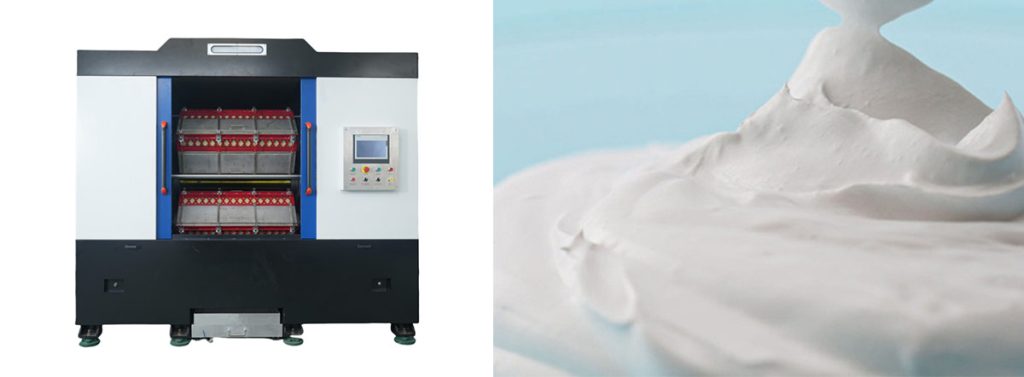

Using an old polishing buffing compound can significantly impact the quality of the buffing process. Over time, the compound degrades, losing its effectiveness and introducing debris that scratches the surface. This leads to uneven finishes and complicates proper polishing. A smooth surface becomes harder to achieve, and dealing with finishing errors becomes a frequent challenge. Additionally, worn compounds fail to provide adequate protection during restoration, resulting in material damage. Regular replacement ensures effective buffing and maintains the desired finish, especially when working with water based finishes or industrial buffing machines.
Key Takeaways
- Change polishing compounds often for good buffing and smooth results.
- Check for clumps or color changes to know when to replace.
- Old compounds can cause dull surfaces and damage, costing more to fix.
- Read the maker’s instructions to know how often to replace.
- Store compounds correctly to make them last longer and stay useful.
What Is a Polishing Buffing Compound?
Purpose and Function
Enhancing Surface Smoothness and Shine
A polishing buffing compound plays a vital role in achieving smooth and shiny surfaces. It contains fine abrasive particles that remove imperfections and refine the material’s texture. This process enhances the overall appearance, making the surface visually appealing. For example, jeweler’s rouge is often used to bring out the luster in precious metals like gold and silver. By using the right buffing technique, professionals can create a mirror finish polishing on various materials, including metals and plastics.
Removing Imperfections Like Scratches or Oxidation
Buffing compounds are essential for eliminating surface flaws such as scratches, oxidation, and blemishes. These imperfections can dull the material and reduce its quality. Compounds like Tripoli are effective for cutting down and polishing nonferrous metals, while steel-specific compounds work well on iron and steel. The buffing process involves using progressively finer abrasives to restore the material’s original condition. This ensures a flawless finish, even on heavily damaged surfaces.
How It Works?
Abrasive Particles Aid in Material Removal
The abrasive particles in a buffing compound are the key to its effectiveness. These particles, often made from materials like alumina or Tripoli, grind away imperfections on the surface. The type of abrasive used depends on the material being polished. For instance, alumina works well on ferrous metals, while Tripoli is ideal for nonferrous metals. The abrasive action removes a thin layer of material, revealing a smoother and more refined surface underneath.
Interaction with Buffing Tools for Desired Finishes
The interaction between the compound and buffing tools is crucial for achieving the desired finish. Buffing wheels, often used with industrial buffing machines, apply the compound to the surface. The binder system in the compound, which includes fatty acids and petroleum wax, ensures the abrasive particles remain suspended and evenly distributed. This allows the buffing technique to work effectively, producing consistent results. Liquid buffing compounds, commonly used in high-volume production, can be applied with spray guns for efficiency. The combination of the right tools and compounds ensures a polished surface with minimal effort.
Signs It’s Time to Replace Your Polishing Buffing Compound
Physical Changes
Clumping or Hardening
A buffing compound often shows physical signs of deterioration over time. Clumping or hardening is one of the most noticeable indicators. When exposed to improper storage conditions, such as high humidity or fluctuating temperatures, the compound loses its smooth consistency. This change makes it difficult to apply evenly during the buffing process. As a result, achieving consistent finishes becomes nearly impossible. Regular inspection of the compound’s texture helps identify when it is no longer suitable for use.
Discoloration or Contamination
Discoloration or contamination is another clear sign that a polishing buffing compound needs replacement. Over time, exposure to dust, dirt, or other debris can compromise its quality. Contaminated compounds introduce foreign particles into the buffing process, leading to scratches or uneven surfaces. For instance, using a discolored compound on water based finishes can result in visible imperfections. Keeping the compound in a clean, sealed container minimizes contamination risks and extends its usability.
Performance Decline
Reduced Polishing Quality

A decline in polishing quality often signals that the buffing compound has reached the end of its effectiveness. Worn-out compounds lose their abrasive properties, making it harder to achieve a smooth surface. The buffing process becomes less efficient, leaving dull or inconsistent finishes. This is especially problematic when working on delicate materials that require precision. Replacing the compound ensures optimal polishing results and prevents unnecessary rework.
Increased Effort to Achieve Results
When a buffing compound no longer performs well, users must exert more effort to achieve the desired finish. This increased effort not only wastes time but also puts additional strain on buffing tools. For example, industrial buffing machines may overheat or wear out faster due to the extra pressure required. Replacing the compound promptly restores efficiency and reduces the risk of tool damage.
Tool and Surface Indicators
Overheating or Wear on Buffing Tools
Buffing tools often show signs of stress when the compound is no longer effective. Overheating, excessive wear, or unusual vibrations during the buffing process indicate that the compound is not performing as intended. These issues can shorten the lifespan of tools, leading to higher maintenance costs. Monitoring tool performance helps identify when a replacement is necessary.
Scratches or Damage on Surfaces
Scratches or damage on surfaces are common consequences of using an old or contaminated buffing compound. Debris within the compound can create deep scratches, while uneven application results in inconsistent finishes. This is particularly detrimental when working on water based finishes, as they require a flawless surface. Replacing the compound ensures a smooth and polished finish without compromising the material’s integrity.
Consequences of Never Replacing Polishing Buffing Compound
Poor Results
Dull or Inconsistent Finishes
Using an old buffing compound often leads to dull or inconsistent finishes. The abrasive particles in the compound lose their effectiveness over time, making it harder to achieve a high-gloss finish. This results in surfaces that appear lackluster and uneven. For example, when working on water based finishes, an ineffective compound can leave visible streaks or patches. Regular replacement of the compound ensures that buffing and polishing deliver the desired results without compromising the surface’s appearance.
Inability to Remove Deeper Imperfections
An outdated polishing buffing compound struggles to address deeper imperfections like scratches or oxidation. The worn abrasives fail to cut through the material effectively, leaving flaws behind. This is particularly problematic when preparing surfaces for additional coats or a topcoat. Without proper polishing, the final finish may highlight these imperfections, reducing the overall quality of the project.
Surface Damage
Scratches from Debris or Degraded Compound
A degraded buffing compound often contains debris or hardened particles. These contaminants can scratch the surface during the buffing process, causing irreversible damage. For instance, industrial buffing machines applying such a compound may create deep gouges instead of smoothing the material. Keeping the compound fresh and uncontaminated prevents these issues and protects the surface’s integrity.
Uneven Polishing Causing Material Loss
Uneven polishing is another consequence of using an old compound. The inconsistent application can remove more material than necessary, leading to an uneven surface. This is especially critical when working on delicate materials or applying multiple coats. Excessive material loss can weaken the surface, making it unsuitable for further topcoat applications. Replacing the compound regularly ensures a uniform finish and minimizes the risk of damage.
Increased Costs
Wasted Time and Effort
An ineffective buffing compound increases the time and effort required to achieve satisfactory results. Users may need to repeat the buffing process multiple times, leading to inefficiency. This wasted effort not only delays project completion but also reduces productivity.
Expenses from Damaged Tools or Materials
Using a degraded compound can also damage tools and materials, resulting in higher costs. Buffing tools, such as industrial buffing machines, may wear out faster due to the extra strain. Additionally, damaged surfaces may require costly repairs or replacements. Regularly replacing the compound helps avoid these unnecessary expenses and ensures smooth project execution.
How Often Should You Replace Polishing Buffing Compound?
General Guidelines
Replace When Physical or Performance Issues Arise
Replacing a polishing buffing compound becomes necessary when physical or performance issues appear. Signs like clumping, hardening, or discoloration indicate that the compound has degraded. These changes make it difficult to achieve consistent finishes. Similarly, a noticeable decline in polishing quality or increased effort during buffing suggests the compound has lost its effectiveness. Regularly inspecting the compound ensures it remains suitable for use and prevents damage to the surface being polished.
Follow Manufacturer Recommendations
Manufacturers often provide specific guidelines for replacing a polishing buffing compound. These recommendations consider the compound’s composition and intended use. Following these instructions helps maintain optimal performance during buffing and polishing. For example, some compounds designed for industrial buffing machines may require more frequent replacement due to their high-intensity usage. Adhering to these guidelines ensures consistent finishes and prolongs the lifespan of tools and materials.
Factors Affecting Replacement Frequency
Type of Material Being Polished

The type of material being polished significantly impacts how often the compound should be replaced. Softer materials like plastics or nonferrous metals may wear down the compound more quickly. In contrast, harder surfaces like steel or iron may allow for extended use. Choosing a compound specifically designed for the material ensures better results and reduces the need for frequent replacement.
Frequency and Intensity of Use
Frequent or intensive use of a polishing buffing compound accelerates its wear. High-volume production environments or projects requiring continuous buffing can quickly degrade the compound. For instance, industrial buffing machines operating at maximum capacity may exhaust the compound faster than manual applications. Monitoring the compound’s condition during heavy use helps determine the right time for replacement.
Storage Conditions
Proper storage conditions play a crucial role in maintaining the quality of a polishing buffing compound. Exposure to extreme temperatures, humidity, or contaminants can cause the compound to deteriorate prematurely. Storing it in a cool, dry place and sealing it tightly after use minimizes these risks. Compounds stored under ideal conditions often last longer, reducing the frequency of replacement.
Conclusion
Regular replacement of polishing buffing compounds ensures consistent performance and protects surfaces from damage. Neglecting this practice often results in poor finishes, increased costs, and inefficiency.
Tip: Inspect compounds regularly for signs of wear, such as clumping or discoloration. Follow manufacturer guidelines to determine replacement frequency.
Using outdated compounds can damage tools like an industrial buffing machine, leading to higher maintenance expenses. Paying attention to these details helps achieve optimal results while extending the lifespan of tools and materials. Consistent maintenance guarantees smooth, polished surfaces every time.
